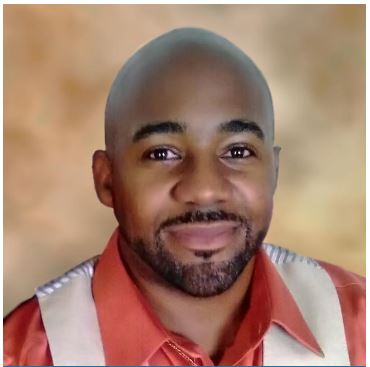MVP volunteer paves the way for “future Einsteins”
Windows Development MVP Dwight Goins volunteers in a TEALS AP Computer Science classroom at STEM High School in Highlands Ranch Colorado. He team-teaches with other industry professionals and a classroom teacher, who had very little training in computer science before TEALS. The grassroots program, which is supported by Microsoft Philanthropies but draws volunteers from more than 200 technology companies nationwide, grows sustainable computer science programs in schools that wouldn’t otherwise have one. By training the teacher, volunteers like Goins ensure more and more young people will gain experience and opportunities—even long after volunteers have moved on. Here, Goins explains he volunteers to create better opportunities for his three daughters—and an entire generation of young Americans. TEALS needs more volunteers, so if you are interested visit www.tealsk12.org .
One day in the TEALS AP Computer Science class I teach, I explained sorting algorithms to my students by having them stand up and arrange themselves, much like an algorithm would do. As we began to move each other around, two students who had gone through the TEALS program a few years ago walked by. They peeked in the classroom and exclaimed, “We remember that!”
Now these were former students who had passed the AP exam—they were basically celebrities to my current class. They came in, moved everyone here and there, and explained how the algorithm worked. Suddenly, it clicked.
The “aha!” moments that followed initialized something in the students: They really got it and I could see that sparkling of understanding in their eye.
That day in class, not only did the students in the TEALS class grasp a core concept of computer science; it also showed we had started a greater ripple effect of education: The young people I taught in TEALS had become teachers themselves. After all, that’s what we volunteers are modeling: we are professionals, but we’re dedicating the time, effort and passion to be teachers and mentors, too.
This year, we volunteers are working with a teacher who had limited coding experience. He is very motivated and eager to learn more. He asks questions as if he were a student, he does the homework himself—and he is improving. He’s already taking the initiative to teach the topics he understands, and we handle whatever he’s unclear on.
That’s one thing that sets the TEALS model apart: It nurtures even teachers who have no experience in programming so they can teach on their own within two years—building a self-sustaining computer science program that runs without volunteers.
I’ve been volunteering with TEALS for three years, and I have no intention of stopping. I started because I have three daughters, and I want them—and others like them—to have experience, knowledge and opportunities in STEM.
But if I’m honest there are selfish benefits, too! For example, I’m a business entrepreneur, so I listen to my students to hear what the latest trends are. Keeping my ear to the ground in my class tells me this or that is the app I need to build next!
Secondly, teaching in TEALS validates that I really know computer science. You can read books and take tests and write apps all you like, but it’s not until you teach it that you truly know your stuff.
Finally, the TEALS program helps my future—all our future. The children we’re teaching will be our governors, attorneys, engineers—everything. They’re leading the frontier of everything that is to come.
These are the young people who will be figuring out everything that stops scientists in 2016. We need them to be educated and confident in the tools of the 21st century. That’s what we’re doing with computer science in TEALS: We’re teaching the future Einsteins to tackle the world’s toughest problems.
About the author
Dwight Goins is the Chief Algorithms Officer (CAO) and Lead Emerging Experience Consultant at Dwight Goins, Inc. located in Colorado. Reach him at dngoins@dwightgoins.com or https://dgoins.wordpress.com.
